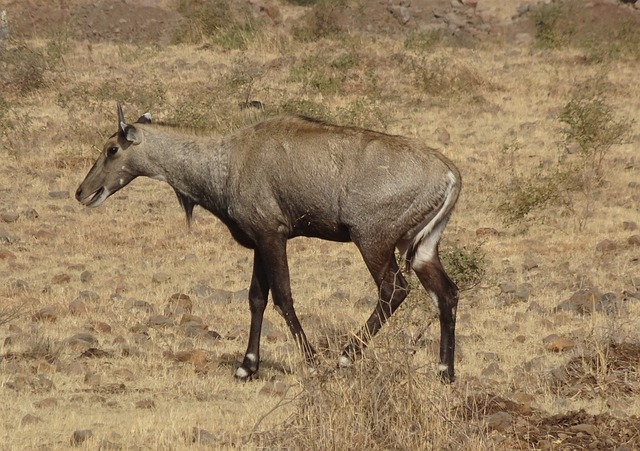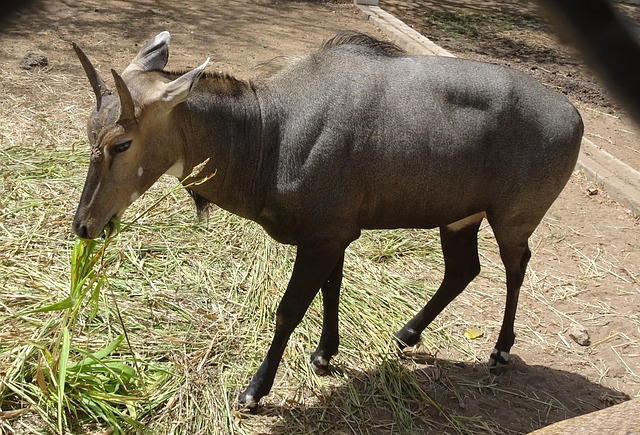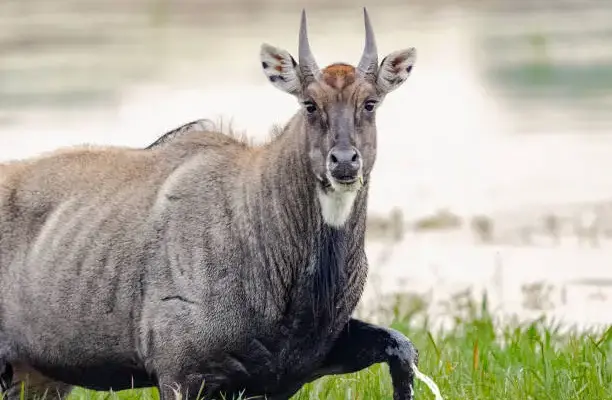Introduction:
In the diverse landscape of culinary delights, there exists a hidden gem that has been gaining popularity among food enthusiasts – Nilgai meat. Also known as the blue bull, Nilgai is a large antelope native to the Indian subcontinent. While Nilgai are primarily known for their majestic presence in the wild, their meat has recently found its way onto the tables of adventurous foodies and conscientious consumers. In this article, we will delve into the fascinating world of Nilgai meat, exploring its characteristics, nutritional benefits, culinary applications, and the conservation considerations associated with its consumption.
The Nilgai: A Majestic Antelope
Before we dive into the culinary aspects of Nilgai meat, it’s essential to understand the animal itself. These herbivores are characterized by their striking appearance, with a bluish-gray coat, white markings, and distinctive spiral horns in males. Nilgai are often found in grasslands, shrublands, and wooded areas, showcasing their adaptability to various environments.
Nilgai are known for their robust physique and ability to thrive in diverse ecosystems. In recent years, the population of Nilgai has increased significantly in some regions, leading to various challenges, including human-wildlife conflicts and habitat degradation. As a result, responsible and sustainable management of the Nilgai population has become a topic of discussion.
Culinary Appeal of Nilgai Meat:
Nilgai meat has gained attention for its unique flavor and nutrient profile. The meat is lean, tender, and has a distinctive taste that sets it apart from more conventional meats like beef or chicken. The flavor can be described as mildly gamey, with a hint of sweetness, making it a versatile option for various culinary applications.

One of the reasons for the growing popularity of Nilgai meat is its nutritional richness. It is a great source of high-quality protein, essential amino acids, and various vitamins and minerals. Additionally, Nilgai meat is lower in fat compared to traditional red meats, making it an appealing choice for health-conscious individuals.
Culinary Applications:
Nilgai meat lends itself well to a variety of culinary preparations, thanks to its versatility and unique flavor profile. From grilling and roasting to slow cooking and braising, chefs and home cooks alike have experimented with different cooking techniques to bring out the best in Nilgai meat.
Grilled Nilgai steaks, seasoned with a blend of spices and herbs, offer a delicious and wholesome dining experience. The meat’s natural tenderness makes it suitable for marinating, infusing it with flavors that complement its inherent taste. Slow-cooked Nilgai stews or braised dishes highlight the meat’s ability to absorb the flavors of the accompanying ingredients, resulting in a rich and hearty meal.
Given its leanness, Nilgai meat can also be ground and used in various recipes, such as burgers, sausages, and meatballs. This allows for a broader range of culinary creations that cater to diverse tastes and preferences.
Sustainability and Conservation Considerations:

While Nilgai meat presents a unique culinary experience, it’s crucial to address the conservation and ethical considerations associated with its consumption. As the Nilgai population has increased in certain regions, managing their numbers has become essential to prevent overgrazing, habitat degradation, and conflicts with agricultural activities.
Sustainable hunting and management practices play a pivotal role in maintaining a healthy balance between Nilgai populations and their ecosystems. When sourced responsibly, Nilgai meat can contribute to local economies and conservation efforts. It is important for consumers to be aware of the sources of Nilgai meat and support suppliers who adhere to ethical and sustainable practices.
Nilgai Meat: Unraveling the Culinary Secrets
A Culinary Voyage
Nilgai meat, often hailed as a gastronomic revelation, is winning hearts around the world with its unique taste and nutritional benefits. Originating from the Nilgai antelope, this meat is gaining prominence as a culinary delicacy, offering a rich and diverse flavor profile that sets it apart from more common meats.
Flavor Profile
Their meat boasts a distinctive taste that blends elements of gaminess with a subtle sweetness. The lean meat is tender and succulent, making it a canvas for various culinary explorations. Its unique flavor allows chefs and home cooks to experiment with different cooking methods and flavor pairings, creating dishes that tantalize the taste buds.
Nutritional Bonanza
Beyond its extraordinary taste, Nilgai meat brings a wealth of nutritional benefits to the table. As a superb source of high-quality protein, it provides the essential amino acids needed for muscle development and overall health. Additionally, his meat is rich in essential vitamins and minerals, including iron, zinc, and B vitamins. Its lower fat content compared to conventional red meats positions it as a wholesome choice for those mindful of their dietary fat intake.
Culinary Applications: Beyond the Ordinary

Nilgai meat’s versatility in the kitchen is a major contributor to its growing popularity. Chefs and culinary enthusiasts have been quick to explore various cooking techniques to unlock the full potential of this exotic meat.
Grilling and Roasting
Grilling Nilgai steaks over an open flame or roasting them in the oven allows the meat’s natural flavors to shine. A simple rub of spices and herbs enhances its taste, creating a delightful and aromatic dish. The lean nature of these makes them receptive to marinades, absorbing flavors and resulting in a mouthwatering culinary experience.
Slow Cooking and Braising
For those seeking a more tender and flavorful outcome, slow cooking or braising Nilgai meat is a winning choice. The extended cooking times allow the meat to absorb the richness of accompanying ingredients, resulting in a dish that is not only delicious but also hearty and comforting.
Conclusion:
In conclusion, Nilgai meat stands out as a unique and nutrient-rich delicacy that adds a touch of exoticism to the culinary world. Its distinctive flavor, lean profile, and versatility make it an appealing choice for those looking to explore new gastronomic horizons. However, with the increasing popularity of Nilgai meat, it is crucial for consumers to be mindful of the ethical and conservation considerations associated with its consumption. By supporting sustainable practices and responsible sourcing, individuals can savor the culinary wonders of Nilgai meat while contributing to the preservation of these majestic antelopes and their ecosystems.





Nice information shared about this wonderful nilgai